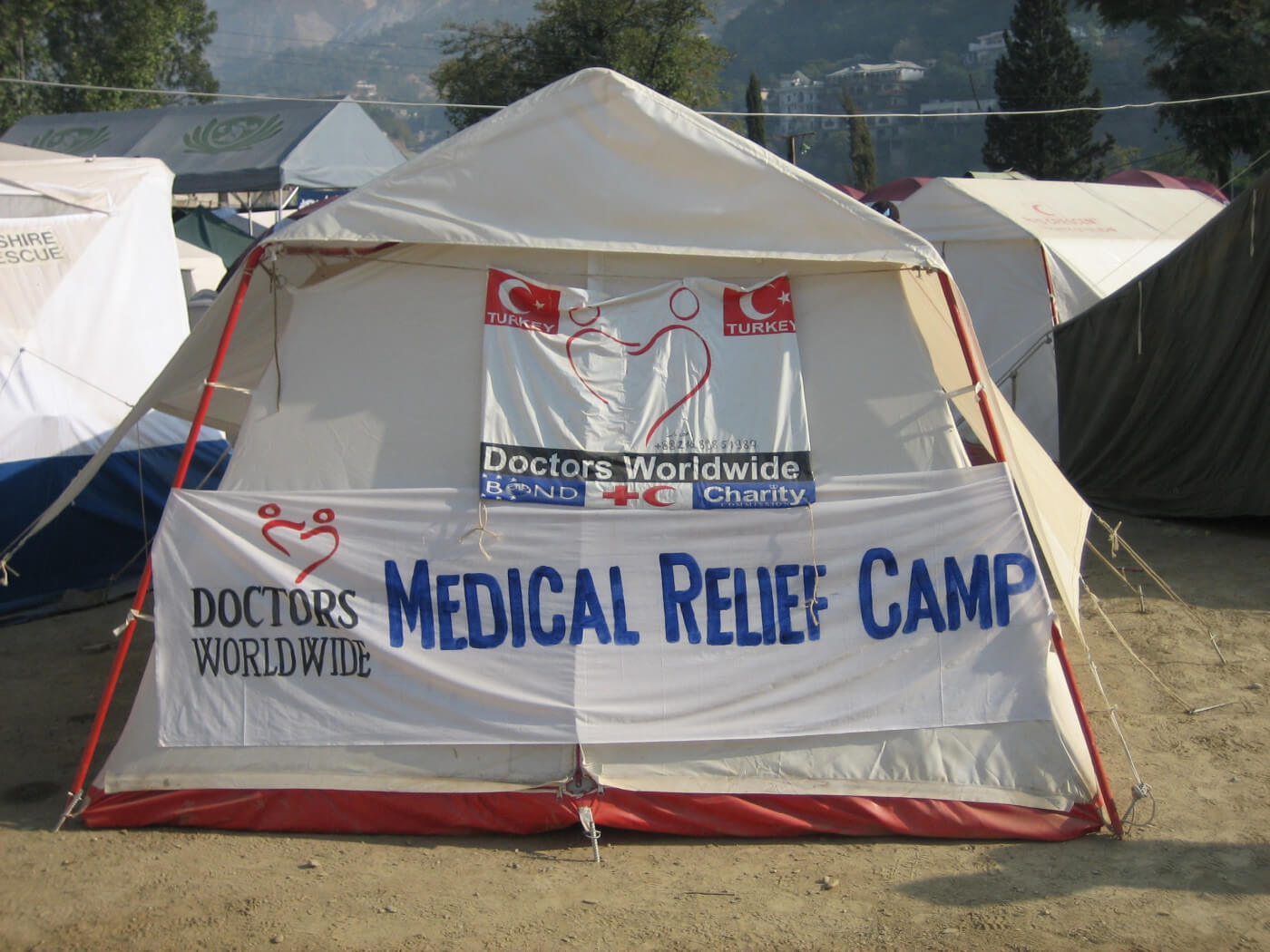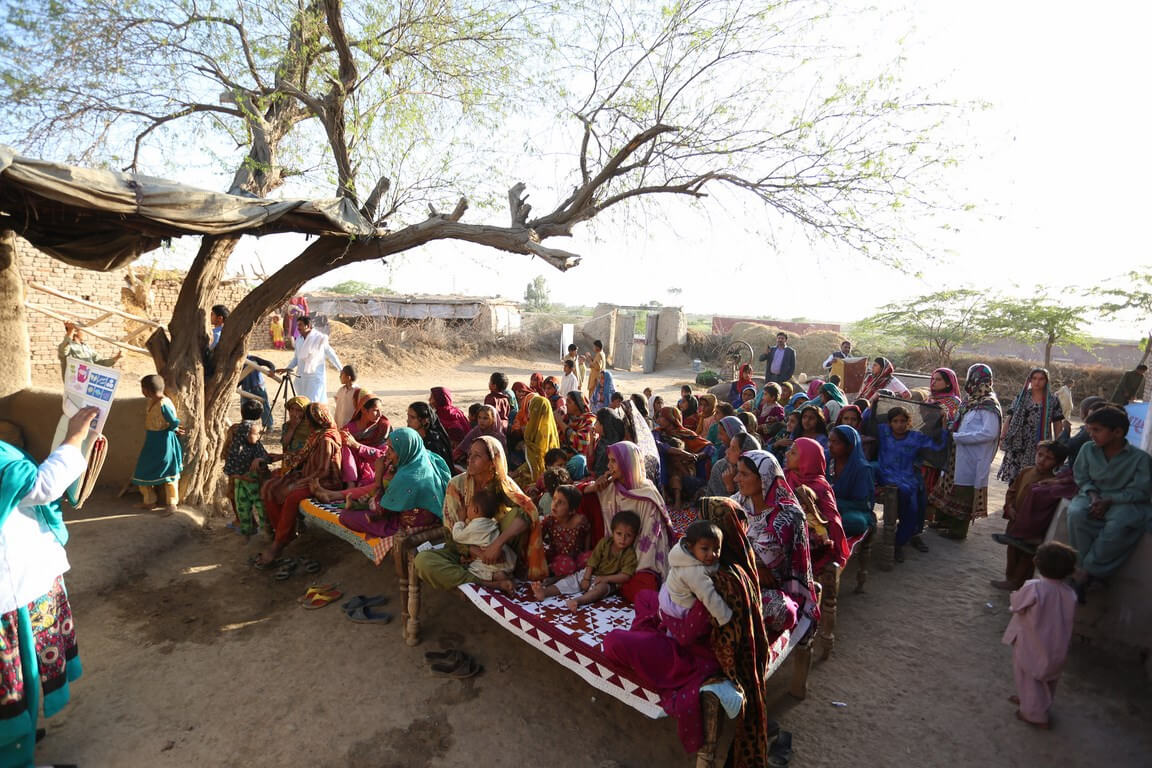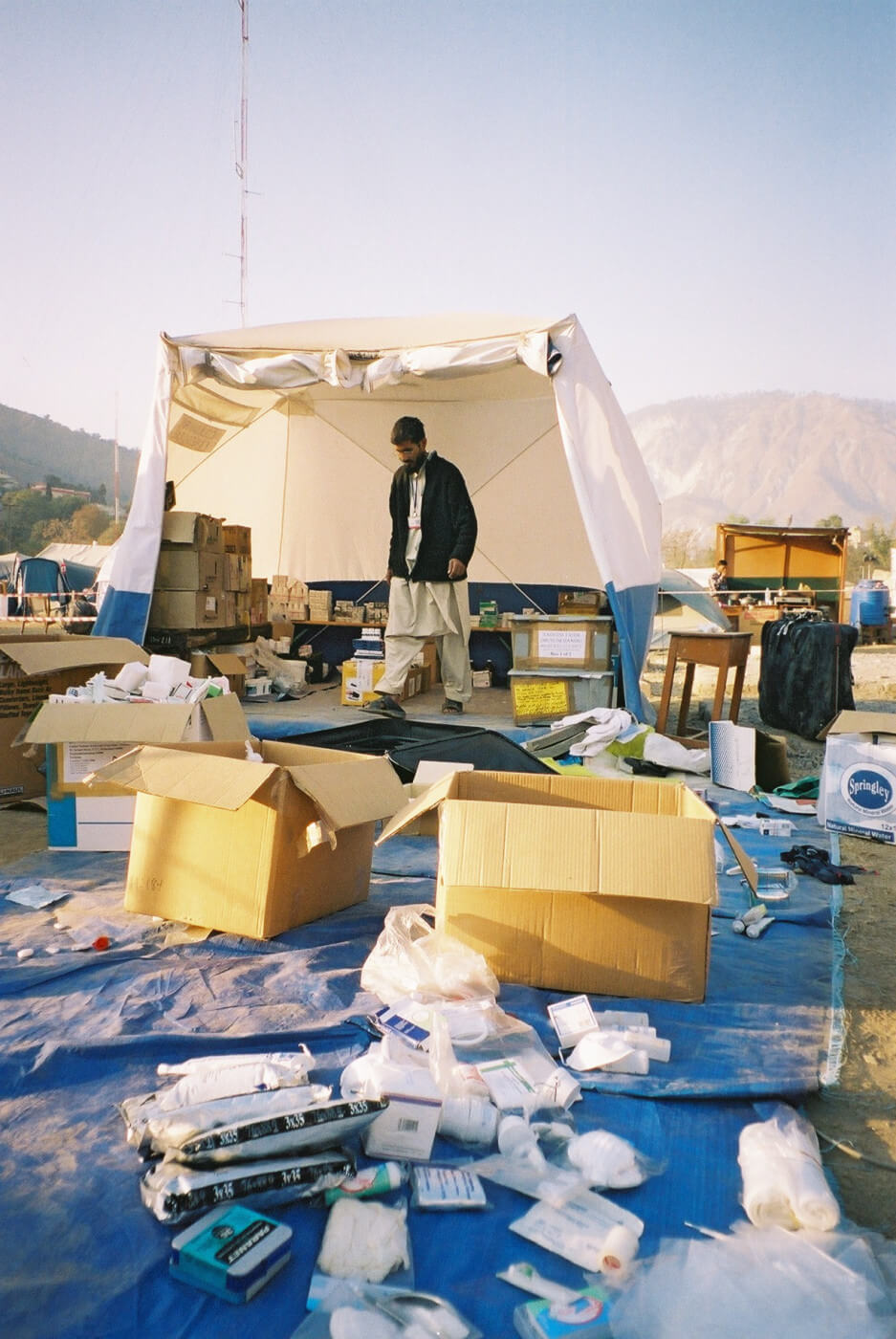Our Sustainable Futures campaign explores the values of Doctors Worldwide - integrity, collaboration, and clinical excellence - and how they are embedded in all of the work we do to ensure long-term, sustainable solutions to healthcare challenges. Today, Dr Alam - one of Doctors Worldwide’s original founders, and someone who has been involved in our work in a whole host of ways since before the charity’s inception - shares his thoughts and reflections on responding to health emergencies.
Our approach to emergency work has never just been about supporting the immediate needs of a vulnerable community - treating the injured and wounded, providing food, clean water, and shelter in the short-term.
Why?
Because it is well documented that over 90% of aid delivered in the first phase of emergency response is undertaken by local organisations. This is perhaps even more true in healthcare, given the logistics and the need for trained staff, equipment, medication, and a safe place to run care from. That’s not to say it can’t be done. In 2005 we responded to the Kashmir Earthquake in 36 hours with our first team on the ground running clinics from a tent, and using flashlights at night.

However, the numbers that can be treated effectively in this way are small.
A full field hospital takes enormous logistics and costs to get to the right place, in a timely manner, and is very expensive to run. In short, it is something that is best left to armies, governments, and perhaps one to two multi-million pound charities. For us, our approach is deeply embedded in our core values:
- Collaboration at health cluster meetings, as well as independently with local and international organisations and medical staff.
- Integrity at every level. Be honest with ourselves and our donors that if there is not an initiative that we can deliver that is beneficial in the short and long-term, and of a high enough standard, then we are transparent and honest enough to not start or continue a project.
- Excellence in all our work, ensuring we continue to uphold and disseminate good practice, even in time-pressured emergency situations.
In practice, this looks like:
1) Needs Assessments & Local Clinic Support
The recent Pakistan Flood Response in 2022 perfectly highlights our general approach of system strengthening. To put it another way, that’s “building back better”, wherein specialist staff look as objectively as possible at an area and consider - from a health perspective - the most feasible method of supporting improvements given the resources at hand. This involves an initial needs assessment and discussion with stakeholders (community, NGOs, government bodies), and most often results in a fairly quick identification of multiple existing health clinics that are functional but lacking in certain areas, and a rapid rehabilitation of buildings and improvement of equipment needed for basic day-to-day care to continue running. The aim is then always to improve what was there before, not just in terms of the physical health structure and its equipment, but also to improve the training of the staff, the efficiency of the clinic, the health literacy of the surrounding communities, improved access and so much more.

So our response has always had an eye to the next phase, even in the first few days of an emergency. Within the first week of the major Pakistan Floods in 2005, we sent a specialist Public Health doctor familiar with the country’s healthcare systems to assess the local needs and response. He identified a key local facility that had been flooded that was providing vital primary and maternal care for a local population, but the District Health Authority was too overwhelmed to help. If we could get this facility up and running and supported with extra medical volunteers, it would have a huge ongoing impact, not just on current needs but in the prevention of future problems.
His assessment from a health perspective was that there were very few medical needs from the floods; there had been a high initial death rate, but very few people with ongoing injuries. The main problem was going to be the extra morbidity and mortality from the lack of access to ongoing regular healthcare needs, in addition to an increase in disease from lack of clean water and lack of sanitary and spacious living conditions. Women still needed to give birth in a safe place, kids were still getting chest infections and more ‘common’ illnesses were still going to occur, there just needed to be a place where these health concerns could be treated.
So we cleaned the place up, and put it back together within 24 hours, brought back previous staff who were still in the area, flew in teams of medical volunteers to enhance the service and run outreach clinics in local refugee camps, built over 50 local water wells, and provided daily cooked food for the local community around the facility. In essence, covering immediate and future needs at the same time.
Responding to emergency situations in this way then provides a greater understanding of local community needs, and the more deep set healthcare needs required for the long-term. As a result of this flood response, our team gained significant insight into the lack of access to, and poor quality of maternal care in rural Pakistan. Our response? The Sindh Maternity Project was developed during the floods, and led on to a 3 year multifaceted maternal health programme.
2) Community Participation
Community participation and collaboration has always been part of our modus operandi. Without community trust and participation, our approach to health system strengthening would not work. There is no point in having facilities if people have no confidence in them or desire to invest in them. During the first phase of the 2022 Pakistan Flood Response, this challenge was bridged through health workers running education sessions and bringing locals into the facility to have meetings and discussions on general healthcare issues and the logistics of running a clinic. Once each clinic base (there were three identified) were up and running, alongside continuous outreach work, adding in other programmes for development became easier as trust was then built both between the local population as well as staff at the clinic. Without this initial groundwork, relationship building, and conversations with the community and staff, improvements could not have been made. As a result of this work, the local healthcare workers were much more open to receiving training, as well as open to suggestions on ways to improve general patient care, because that foundation of trust had been built.
In 2005 in Sindh, our approach to community participation and collaboration meant running many local meetings with community members, village leaders, local land owners, MPS, government officials, and families to understand the issues at hand, asking them for ideas and solutions, and then coming back to them with answers. Most important was talking to the women themselves, not just for education on general health and pregnancy issues - of which we conducted hundreds of sessions - but also helping them understand what they should expect from health facilities and maternal care.

One of the greatest pieces of feedback we ever received was when we finally transferred responsibility of the maternal clinic we had run in Sindh to the government private/public institution that we had been asked to hand over to. When the local community found out, they launched their own picket outside the clinic, asked a local English teacher to write out placards for them, and dozens of women gathered around the gates asking us not to leave. They even called a local TV channel!
3) Collaborating with Charities
Since day one, part of our aims have always been to try and work as collaboratively as possible with other organisations. In many ways, it is one of the most difficult and challenging tasks; everyone has their own agenda, or stakeholders to appeal to, so the endeavour becomes highly time-consuming, and not always easy to do during an emergency when time is of the essence.
This approach is therefore often easier during development work, where there is time for relationships to be forged, although it can still work in emergencies when everyone is willing to make compromises in order to reach the same goal. During the recent Pakistan Floods in 2022, we successfully brought together five different charities, NGOs, and government bodies to work together on one proposal to lead an overarching response project, where each organisation pooled funds, resources and provided local staff to support the cause. Through collaboration with partners, this resulted in our combined support of a total of 14 districts across 4 provinces in Pakistan. Right now, we are supporting the full running of 3 clinics in flood-affected areas in Sindh, serving a total population of over 186,000. There, we are providing free treatment and medication, as well as continuing to conduct health promotion activities (information on types of unsafe water, immunisation drives, etc) to increase basic health education for vulnerable communities. Without this scale of collaboration, the breadth of impact would not have been possible.
So, to summarise
First, we assess: what’s currently available within the Health Sector? Where were the short falls before and what are the new ones now? Are there any local leaders or organisations that we can engage with? Are there any organisations in the area that we can work with to collaborate resources and knowledge?
Then, we consider: which resources from outside and inside the country we can access in the short and medium term? What skill gaps can we help improve in the local population and medical personnel? What preventative measures can we put into place now that are needed (vaccinations, water supply, access to medical care, medication shortages, healthcare education etc)?
Once the direct, short term approach is covered: which health intervention that will be needed after the first few weeks of the emergency do we have the capacity to start working towards now? What are the long-term needs and how do we fit as an organisation to help cover these needs? What have we learned as an organisation to help improve our response for the next time?



